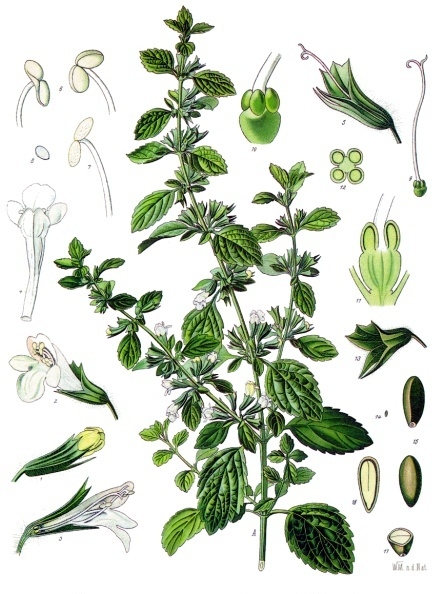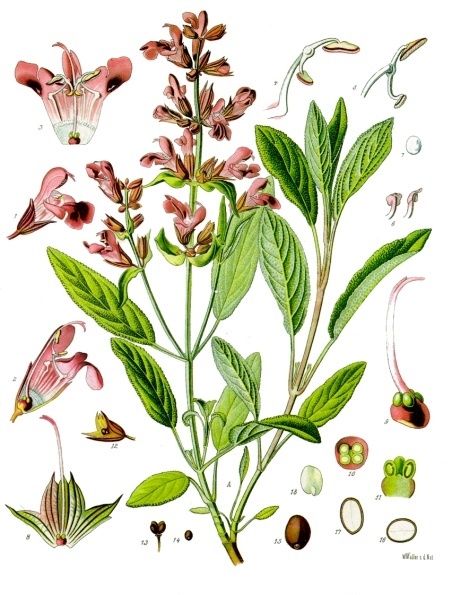February 23 - March 1, 2014: Issue 151
Fresh Herbs for Health
Many seem a little bit stressed as Summer ends and Autumn looms – time to take a few hours off, go sailing or swimming and when you get back to shore, try a few of these herbal remedies out.
All of the eatable herb range contains vitamins and minerals and properties which will aid with everything from digestion to stinky breath. For this Issue we’d like to share a few that will de-stress you without having to resort to the red wine bottle. They can be easily made into teas, sprinkled over meals as ingredients that will enhance the other parts of dishes, or just potted up for your sunny kitchen window for eating a leaf or two when you realise looking after you will benefit all those you look after!
Lemon balm (Melissa officinalis), also known as balm or balm mint is a perennial herb in the mint family Lamiaceae, native to center-southern Europe and the Mediterranean region. As its name indicates, this is a ‘balm’ – a calmative.
As an oil it may be used in aromatherapy, as a leaf, you can turn it into tea or add some to ice cream - In the traditional Austrian medicine Melissa officinalis leaves have been prescribed for internal (as tea) or external (essential oil) application for the treatment of disorders of the gastrointestinal tract, nervous system, liver and bile. Lemon balm is the main ingredient of Carmelite Water, which is still for sale in German pharmacies. High doses of purified lemon balm extracts were found to be effective in the amelioration of laboratory-induced stress in human subjects, producing "significantly increased self-ratings of calmness and reduced self-ratings of alertness." The authors further report a "significant increase in the speed of mathematical processing, with no reduction in accuracy" following the administration of a 300 mg dose of extract. (Kennedy DO, Little W, Scholey AB (2004). "Attenuation of laboratory-induced stress in humans after acute administration of Melissa officinalis (Lemon Balm)". Psychosom Med 66 (4): 607–13. doi:10.1097/01.psy.0000132877.72833.71.PMID 152721)
 Lemon balm is believed to inhibit the absorption of the thyroid
medication thyroxine. Recent research found a daily dose of the tea reduced
oxidative stress status in radiology staff that were exposed to persistent
low-dose radiation during work. After only 30 days of taking the tea daily,
researchers found Lemon balm tea resulted in a significant improvement in plasma
levels of catalase, superoxide dismutase, and glutathione peroxidase and a
marked reduction in plasma DNA damage, myeloperoxidase, and lipid peroxidation.
The crushed leaves, when rubbed on the skin, are used as a repellent for
mosquitoes.
Lemon balm is believed to inhibit the absorption of the thyroid
medication thyroxine. Recent research found a daily dose of the tea reduced
oxidative stress status in radiology staff that were exposed to persistent
low-dose radiation during work. After only 30 days of taking the tea daily,
researchers found Lemon balm tea resulted in a significant improvement in plasma
levels of catalase, superoxide dismutase, and glutathione peroxidase and a
marked reduction in plasma DNA damage, myeloperoxidase, and lipid peroxidation.
The crushed leaves, when rubbed on the skin, are used as a repellent for
mosquitoes.
Image: Melissa_officinalis Franz Eugen Köhler, Köhler's Medizinal-Pflanzen – 1887 Melissa officinalis. (2014, February 17). In Wikipedia, The Free Encyclopedia. Retrieved from http://en.wikipedia.org/w/index.php?title=Melissa_officinalis&oldid=595887343
Rosmarinus officinalis, commonly known as rosemary, is a woody, perennial herb with fragrant, evergreen, needle-like leaves and white, pink, purple, or blue flowers, native to the Mediterranean region. It is a member of the mint family Lamiaceae, which includes many other herbs. The name "rosemary" derives from the Latin for "dew" (ros) and "sea" (marinus), or "dew of the sea". The plant is also sometimes called anthos, from the ancient Greek word ἄνθος, meaning "flower".
This plant is said to improve the memory and was used in ancient times by students sitting whatever exams were sat. Rosemary has a very old reputation for improving memory and has been used as a symbol for remembrance during weddings, war commemorations and funerals in Europe and Australia, where it is worn on ANZAC day, not just as a form of honoring those who served in Gallipoli but also because the soldiers on that campaign were surrounded by it on the Gallipoli peninsuka and the constant bullets through it scented the air with rosemary.
In the Middle Ages, rosemary was associated with wedding ceremonies. The bride would wear a rosemary headpiece and the groom and wedding guests would all wear a sprig of rosemary, and from this association with weddings, rosemary evolved into a love charm. Newlywed couples would plant a branch of rosemary on their wedding day. If the branch grew, it was a good omen for the union and family. Clearly a good one if stress is making you forget things, which leads to more stress, or if the littlies are mucking up and you’d rather resolve any tensions through quite speech.
Rosemary. (2014, January 29). In Wikipedia, The Free Encyclopedia. Retrieved from http://en.wikipedia.org/w/index.php?title=Rosemary&oldid=592940115
 Salvia officinalis (sage, also called garden sage, or
common sage) is a perennial, evergreen subshrub, with woody stems, grayish
leaves, and blue to purplish flowers. It is a member of the family Lamiaceae and
is native to the Mediterranean region, though it has naturalized in many places
throughout the world. It has a long history of medicinal and culinary use, and
in modern times as an ornamental garden plant. The common name "sage" is also
used for a number of related and unrelated species.
Salvia officinalis (sage, also called garden sage, or
common sage) is a perennial, evergreen subshrub, with woody stems, grayish
leaves, and blue to purplish flowers. It is a member of the family Lamiaceae and
is native to the Mediterranean region, though it has naturalized in many places
throughout the world. It has a long history of medicinal and culinary use, and
in modern times as an ornamental garden plant. The common name "sage" is also
used for a number of related and unrelated species.
In the traditional Austrian medicine Salvia officinalis herb has been used internally (as tea or directly chewed) for treatment of disorders of the respiratory tract, mouth, gastrointestinal tract, and skin.
Salvia and "sage" are derived from the Latin salvere (to save), referring to the healing properties long attributed to the various Salvia species. It has been recommended at one time or another for virtually every ailment by various herbals. Modern evidence shows possible uses as an antisweating agent, antibiotic, antifungal, astringent, antispasmodic,estrogenic, hypoglycemic, and tonic. In a double blind, randomized and placebo-controlled trial, sage was found to be effective in the management of mild to moderate Alzheimer's disease.
The plant had a high reputation throughout the Middle Ages, with many sayings referring to its healing properties and value. It was sometimes called S. salvatrix (sage the savior), and was one of the ingredients of Four Thieves Vinegar, a blend of herbs which was supposed to ward off the plague. Dioscorides, Pliny, and Galen all recommended sage as a diuretic, hemostatic, emmenagogue, and tonic.
We use it at home, picked fresh from our garden, in stuffings and for fresh fish as a burnt sage butter – yum!
Salvia officinalis Franz Eugen Köhler, Köhler's Medizinal-Pflanzen 1897 Kohler's Medicinal Plants
Salvia officinalis. (2014, February 9). In Wikipedia, The Free Encyclopedia. Retrieved from http://en.wikipedia.org/w/index.php?title=Salvia_officinalis&oldid=594641666
Basil, Thai basil, or sweet basil, is a common name for the culinary herb Ocimum basilicum. Basil is originally native to India, having been cultivated there for more than 5,000 years. Basil and oregano contain large amounts of (E)-beta-caryophyllene (BCP), which might have a use in treating inflammatory bowel diseases and arthritis. BCP is the only product identified in nature that activates CB2 selectively; it interacts with one of two cannabinoid receptors (CB2), blocking chemical signals that lead to inflammation, without triggering cannabis's mood-altering effects. Recently, there has been much research into the health benefits conferred by the essential oils found in basil. Scientific studies in vitrohave established that compounds in basil oil have potent antioxidant, antiviral, and antimicrobial properties, and potential for use in treating cancer. In addition, basil has been shown to decrease the occurrence of platelet aggregation and experimentalthrombus in mice. It is traditionally used for supplementary treatment of stress, asthma and diabetes in India.
Eaten fresh as part of a tomato, garlic, olive oil crostini or ground up to make pesto – this is a high level good for you herb.
Basil. (2014, February 16). In Wikipedia, The Free Encyclopedia. Retrieved from http://en.wikipedia.org/w/index.php?title=Basil&oldid=595678159
Oregano scientifically named Origanum vulgare byCarolus Linnaeus, is a common species of Origanum, a genus of the mint family(Lamiaceae). It is native to warm-temperate western and southwestern Eurasia and the Mediterranean region. Hippocrates used oregano as an antiseptic, as well as a cure for stomach and respiratory ailments. A Cretan oregano (O. dictamnus) is still used today in Greece as a palliative for sore throat.]
Oregano is high in antioxidant activity, due to a high content of phenolic acids andflavonoids. In test-tube studies, it also has shown antimicrobial activity against strains of the food-borne pathogen Listeria monocytogenes.
In the traditional Austrian medicine Origanum vulgare herb has been used internally (as tea) or externally (as ointment) for treatment of disorders of the gastrointestinal tract, respiratory tract, and nervous system. Oregano is the anglicised form of the Italian word origano, or possibly of the medieval Latinorganum; this latter is used in at least one Old English work. Both were drawn from theClassical Latin term origanum, which probably referred specifically to sweet marjoram, and was itself a derivation from the Greek ὀρίγανον (origanon), which simply referred to "an acrid herb". The etymology of the Greek term is often given as oros ὄρος "mountain" + the verb ganousthai γανοῦσθαι "delight in", but the Oxford English Dictionary notes it is quite likely a loanword from an unknown North African language.
Oregano. (2014, February 18). In Wikipedia, The Free Encyclopedia. Retrieved from http://en.wikipedia.org/w/index.php?title=Oregano&oldid=596088510
|
|
Copyright Pittwater Online News, 2014. All Rights Reserved.